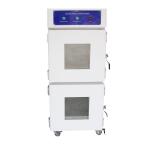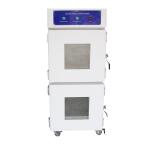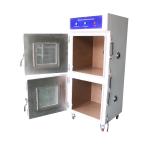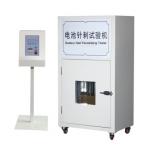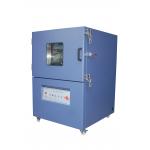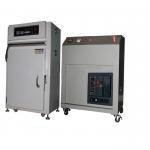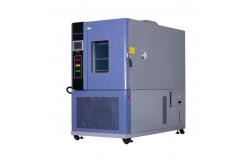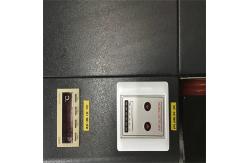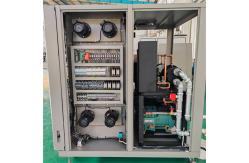In the highly competitive automotive industry, ensuring the
reliability and longevity of vehicle components is of utmost
importance. The Customized Environmental Climatic Chamber for the
Automotive Industry is a sophisticated tool that allows
manufacturers and suppliers to subject automotive parts and systems
to a wide range of environmental conditions, replicating the
diverse challenges they will face during a vehicle's lifespan. This specialized chamber is designed to test various automotive
components, including engines, transmissions, electrical systems,
interiors, and exterior body parts. It caters to automotive OEMs
(Original Equipment Manufacturers), Tier 1 and Tier 2 suppliers, as
well as research and development institutions in the automotive
sector. The primary goal is to evaluate how these components
perform and endure in different temperature, humidity, and other
environmental stressors, such as salt spray, dust, and UV
radiation. By conducting comprehensive tests, potential weaknesses
can be identified and addressed, leading to improved product
quality, enhanced safety, and increased customer satisfaction. - Robust and Spacious Construction
- The chamber is built with a heavy-duty framework, typically made of
high-strength steel, to withstand the rigors of testing large and
heavy automotive components. The exterior is engineered to be
corrosion-resistant, ensuring a long service life even in harsh
testing environments. The interior is designed with a smooth and
non-reactive surface to prevent any damage or interference with the
tested samples. The door is large and features a reliable sealing
mechanism, incorporating a high-quality gasket and a multi-point
locking system, maintaining a stable and controlled testing
environment. The chamber also includes proper ventilation and
exhaust systems to manage any fumes or gases generated during
testing, such as those from engine combustion or chemical exposure.
- Precision Environmental Control Systems
- Temperature Control: Capable of maintaining a wide temperature
range, from -40°C to +150°C, with an accuracy of ±1°C. It utilizes
advanced refrigeration and heating technologies, such as
industrial-grade compressors and high-power heating elements. The
control system incorporates a feedback loop with multiple
temperature sensors strategically placed throughout the chamber,
ensuring uniform temperature distribution. The user-friendly
control panel allows for precise programming of temperature
profiles, including rapid temperature changes and extended soak
times, mimicking real-world conditions like cold starts in winter
or heat soak in traffic.
- Humidity Control: The humidity control system can achieve humidity
levels from 5% to 95% RH, with an accuracy of ±3% RH. It employs a
combination of steam injection and dehumidification techniques,
along with a carefully designed air circulation pattern. Humidity
sensors continuously monitor the internal environment, and the
control system adjusts accordingly to create the desired humidity
levels. This is crucial for testing the effects of moisture on
components, such as the corrosion of metal parts, the performance
of electrical systems in humid conditions, or the durability of
interior materials like upholstery and dashboard plastics.
- Salt Spray and Chemical Resistance Testing: To simulate the
corrosive effects of road salts and other chemicals, the chamber is
equipped with a salt spray and chemical injection system. It can
introduce controlled amounts of salt solutions, acid rain
simulants, and other automotive-related chemicals into the testing
environment. The chamber's interior is designed to resist corrosion
from these substances, and the system allows for precise control of
the concentration, duration, and spray pattern of the chemicals.
This is essential for evaluating the durability of exterior body
panels, chassis components, and undercarriage parts.
- Dust and Particulate Simulation: The chamber can generate and
maintain a controlled environment with different levels of dust and
particulate matter, replicating the dusty conditions that vehicles
may encounter on unpaved roads or in industrial areas. It has a
dust injection system that can introduce various types of dust,
such as silica dust or sand, and adjust the concentration and
particle size. This enables the testing of air filtration systems,
engine intake systems, and the sealing performance of components
against dust ingress.
- UV and Sunlight Exposure: To assess the impact of sunlight on
exterior and interior components, the chamber is equipped with
high-intensity UV lamps. The UV spectrum and intensity can be
adjusted to simulate different levels of solar radiation, including
the effects of long-term exposure on paint finishes, plastic
degradation, and the fading of interior fabrics and trims. The
chamber can also simulate the heat generated by sunlight, further
enhancing the realism of the testing environment.
- Advanced Instrumentation and Data Acquisition
|
